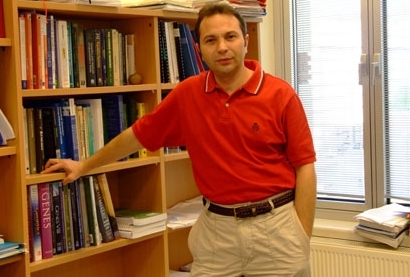25/07/2014
Three Research Papers by Sabancı University Featured in Science
The International Wheat Genome Sequencing Consortium (IWGSC) published the draft genome sequence of bread wheat in the international journal Science. Three of the four articles printed in the journal were authored by Sabancı University faculty members.
Sabancı University Faculty of Engineering and Natural Sciences Biosciences and Bioengineering Program professor Hikmet Budak, who published an article in the Science journal and is the only Turkish implementer of the International Wheat Genome Sequencing Consortium, said: “We prepared the first draft of the wheat genome and published this as a Special Issue of Science, one of the world’s most influential journals. Sabancı University was cited in three research papers published by the Consortium in the journal.” Hikmet Budak and his team had received €1 million in funding from Bayer CropScience for physical map completion.
Wheat genome is being revealed
Final step before full genome sequencing
Wheat is a staple of diet. Wheat crops cover a greater area than any other crop, and with over 215 million hectares of crop area and 700 million tons of global yield annually, it is the third most-produced grain after maize and rice. Wheat is the greatest source of vegetable protein in human consumption and has higher protein content than maize or rice. Wheat can be cultivated in a wider range of climate conditions, making it more versatile.
The chromosome-based draft of wheat’s large and complex genome will shed light into the structure, organization and evolution of wheat as one of the most critical and widely cultivated crops in the world. Genetic sequence of wheat is very important to wheat scientists and breeders, who will have the tools to place specific genes in all chromosomes of the genome for the first time.
The draft sequence is a critical point in the IWGSC’s efforts for obtaining ultimately a complete reference sequence of the hexaploid bread wheat genome. Another paper in the same issue of Science provides the reference sequence for 3B, the largest chromosome in wheat. This proves that sequencing other chromosomes is within reach, and provides a template. IWGSC scientists estimate that the complete reference sequence will be ready in three years.
“With the draft gene sequence for each of the bread wheat chromosome and the first reference sequence of chromosome 3B, we have reached a great milestone in our roadmap,” said Catherine Feuillet, IWGSC co-chair. “We know now the way forward to obtain a reference sequence for the 20 remaining chromosomes and we hopefully will be able to find the resources to achieve this in the next three years.”
With a chromosome-based full sequence in hand, plant breeders will have high quality tools at their disposal to accelerate breeding programs and to identify how genes control complex traits such as yield, grain quality, disease, pest resistance, or abiotic stress tolerance. They will be able to produce a new generation of wheat varieties with higher yields and improved sustainability to meet the demands of a growing world population in a changing environment.
The draft sequence is already providing new insights into the history and evolution of the wheat genome and genes involved in grain development, as exemplified in two additional publications appearing in the same issue of Science.
About IWGSC:
The IWGSC, with more than 1,000 members in 57 countries, is an international, collaborative consortium, established in 2005 by a group of wheat growers, plant scientists, and public and private breeders. The goal of the IWGSC is to make a high quality genome sequence of bread wheat publicly available, in order to lay a foundation for basic research that will enable breeders to develop improved varieties.
For more information: www.wheatgenome.org

